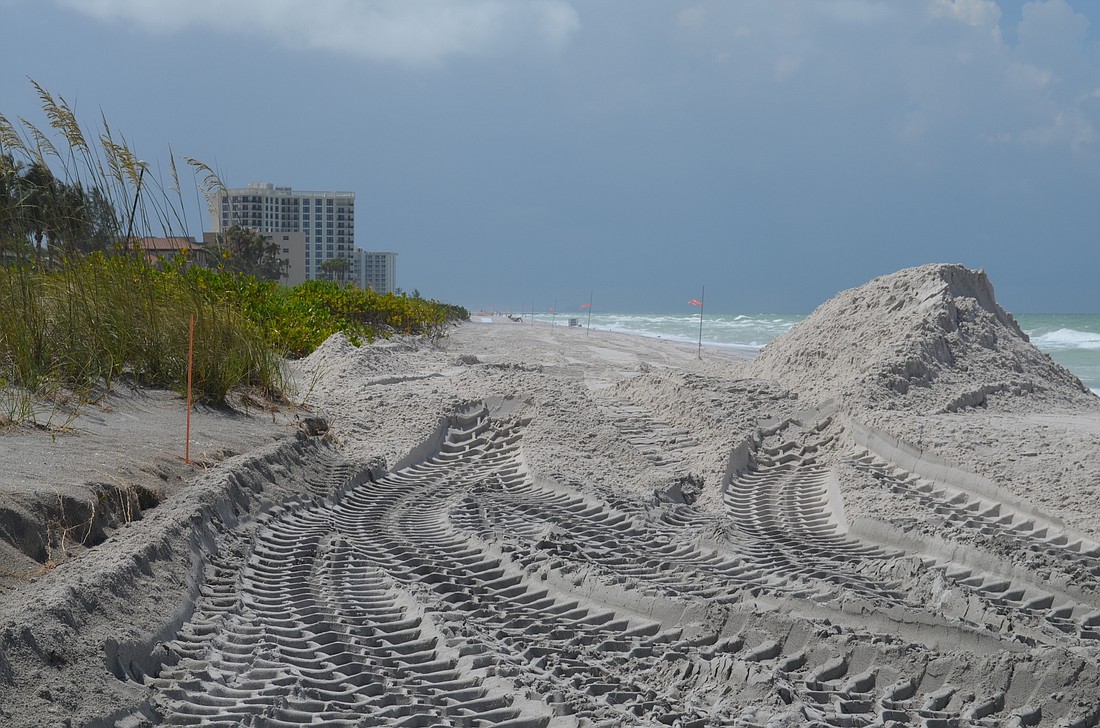- December 21, 2025
-
-
Loading

Loading

In 1984, the U.S. Army Corps of Engineers determined the town of Longboat Key was eligible for federal renourishment funding for about two-and-half miles of beach near the county line. More than 30 years later, the town hasn’t received any federal funds.
But this year, the federal agency requested $1.5 million in funding to study the feasibility of undertaking a shoreline restoration on the Key, which Town Manager Dave Bullock said the municipality will match. If the study ultimately leads to a beach project for the island, the town will lock down federal funding for 50 years.
“I think we've gotten farther now in the last couple of months than we have in the years I’ve been here,” said Bullock, just minutes before speaking with Army Corps project manager Brandon Burch Thursday morning.
During the call, Burch outlined plans to include the town in its fiscal year 2018 budget. Despite the agency identifying at least two miles of shoreline worthy of federal money three decades ago, it’s still uncertain whether the town currently has shorelines that qualify for enough support from the Army Corps for the town to accept federal dollars.
“So much has changed since then,” Bullock said. “They were worried about Gulf of Mexico Drive washing out, we didn’t have quite the beach accesses we have today and I’m not sure the criteria is the same.”
The study will take place under the Army Corps’ 3x3x3 rule, which dictates that it takes no more than three years to perform an analysis, it costs no more than $3 million and it includes three levels of review. The study will determine the need for storm protection, which could include renourishment — but also dune building or shoreline hardening, as well.
“It’s kind of expedited process compared to what we’ve done in the past,” said Burch.
According to Army Corps spokeswoman Susan Jackson, the federal government has already approved Longboat for a beach project, but a new feasibility study must be undertaken before anything can move forward.
Commissioner Armando Linde, who served as deputy secretary of the International Monetary Fund, said the town should take a cautious approach with dealing the Army Corps, as there will be strings attached with any financial assistance. During budget workshops for 2017, he has voiced support for alternative options and funding sources to support the island’s beaches.
“It’s a bit premature to think federal funds are around the corner,” Linde said.
The town has stumbled in the past dealing with Army Corps, mostly due to promotions and turnover in the agency’s ranks. For example, Longboat had previously worked directly with Milan Mora, who is now works above Burch.
“With having dealt with the Corps for over 20 years, it’s not unusual to have a change in personnel,” Bullock said. “Sometimes, it sort of interrupts the discussion.”
But Mora has remained involved with current conversations with the town, giving Bullock hope this time will be different.
“He had all the background,” Bullock said. “We haven’t lost that continuity entirely; it just got promoted, so to speak.”
In determining how much of a municipality’s renourishment project it funds, the Army Corps uses a sliding scale of criteria. Those include the number of public beach accesses — Longboat has 14 — the number of parking spaces those accesses have, the frequency of public openings and the number of transit stops along the shores, among other variables.
“We have a lot of transit, but not a lot of parking,” Bullock said.
Further, Bullock believes the town fits perfectly into the Army Corps’ primary mission to protect infrastructure: Longboat has a main road that sits right next to its shores, and several side streets, such as Broadway Street, dead-end at the beach.
“We also have a wastewater collection system that is heavily exposed and has become inundated from time to time,” Bullock said.
Still, the federal funding will be a crucial puzzle piece in the town’s renourishment strategy moving forward, as sea-level rise and scarcity of sand sources sends renourishment costs soaring, said Robert Young, director of the Program for the Study of Developed Shorelines at Western Carolina University.
“It’s going be a problem thats lots of localities will be facing,” Young said.
Currently, the town funds beach projects through two special taxing districts, Beach Districts A and B, which add a total of about one mill to property taxes, state grants and tourist development taxes from Manatee and Sarasota counties. In 2017, the town of Longboat Key is slated to spend $18.9 million out of its beach capital fund, which will then be left with about $721,000.
“If there were a federal match, that definitely eases the burden on our taxpayers,” Bullock.
While the town and Army Corps appear to be moving forward quickly with budget discussions, the U.S. Congress ultimately holds the key to freeing up funds for the feasibility study.
“Whenever you’re working with the federal government, you know you're in for some frustration,” Linde said.